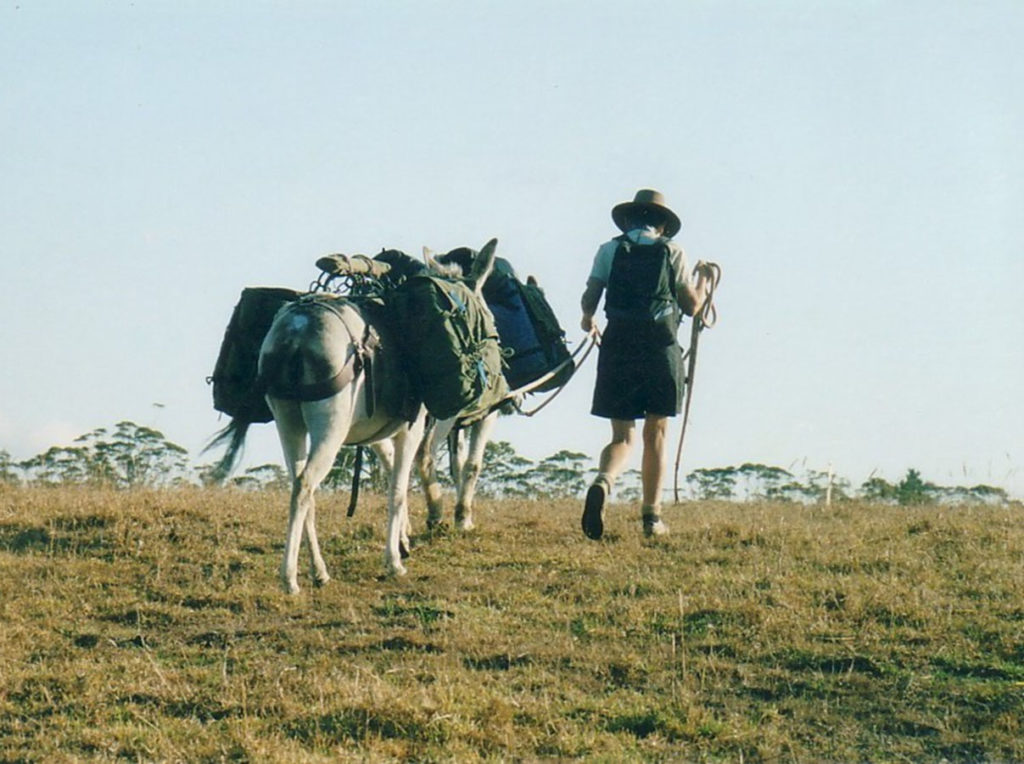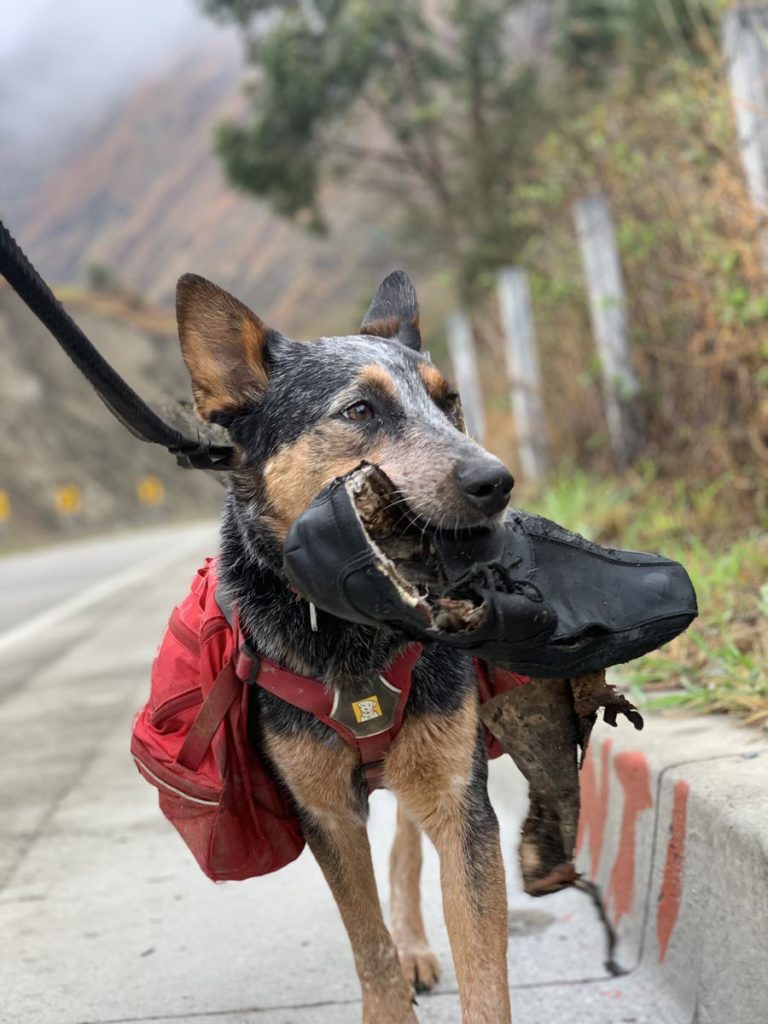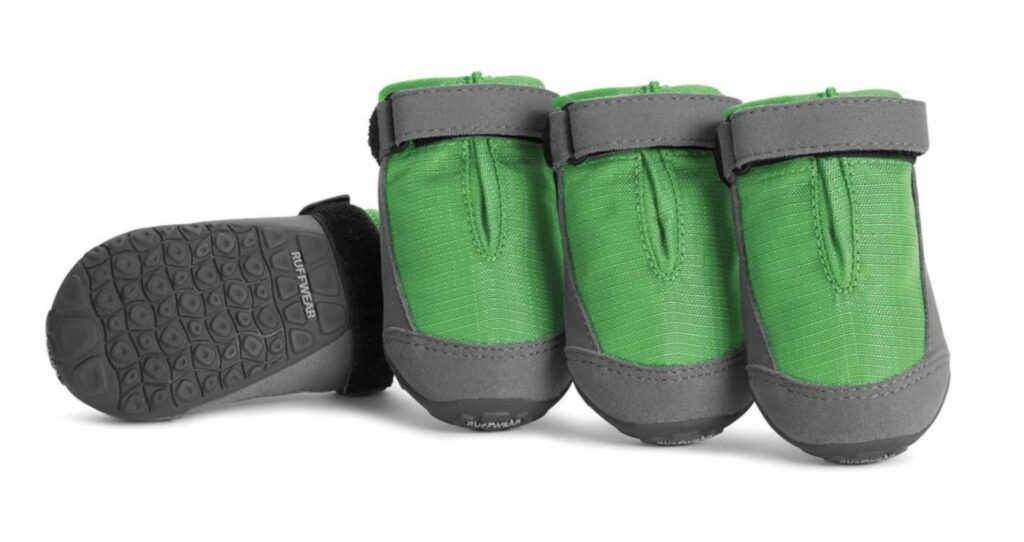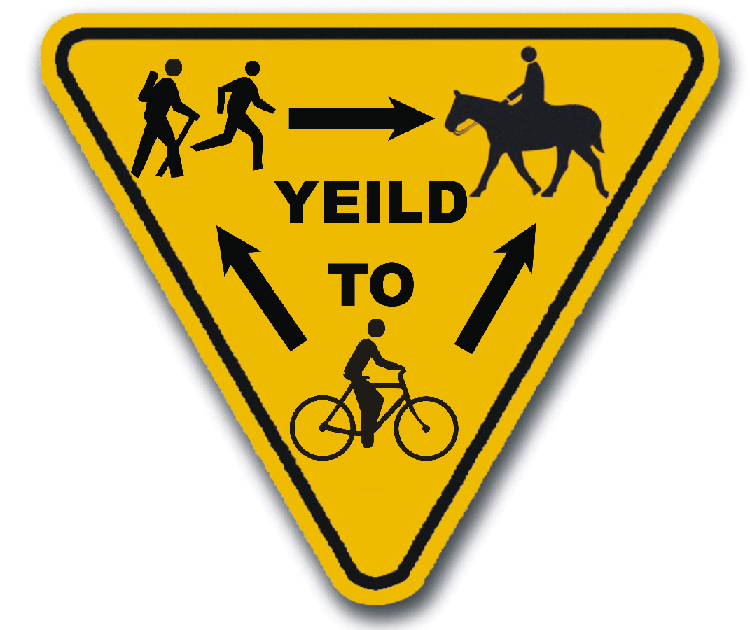Hiking with animals
Hiking practice
The human connection with animals is timeless. First as food, then as working partners that carried our loads, helped us hunt or managed and protected our herds, and then evolving into companions. Animals have become an integral part of our lives in one way or another so it’s not surprising many of us want to include them in our hiking activities. While taking domestic animals on hikes is much more common in the USA, this is also starting to become more common in Australia.
In this article we look at the options for taking animals on the trail from an Australian perspective as a companion or to help us with our endeavours.
Pack animals
One of the most obvious options for including animals in our hiking endeavours is as pack animals. Pack animals including horses, donkeys, and to a lesser extent, mules, lamas, alpacas and camels, provide an option for load carrying that hikers just can’t manage. Taking pack animals, or any animal for that matter, with you on a hike creates a whole set of other considerations including specific food and first aid requires for your animals.
There are a number of national and state parks throughout Australia that allow horses however if you are planning on taking a pack animal with you then check with each individual park about specific requirements and limitations. While horses are considered in most states and territory management plans, donkeys, mules, lamas/alpacas and camels aren’t specifically discussed and you should talk with the park management about where they sit in the scheme of things to find out if they are allowed.

Liz Byron and her donkeys on the trail
Companion animals
Often our connection to animals goes well beyond that of working partner and we develop a personal relationship as they become part of our family or our companion. While we may want to do a long distance trip with our favourite domestic animal, we really are talking about here are dogs. With the exception of Assistance Animals, dogs aren’t allowed in many of our national parks although there are exceptions in some states. Even when they are allowed they must be on a leash and under control of the owner.
Cats are banned from national parks in all states and territories because of the damage they can do if they escape and turn wild; feral cats do huge damage to our native wildlife. Caged birds, while unlikely to be a hiking companion, are also an issue in some states as they may carry potential diseases that can impact our native populations.

Wombat of Tangles and Tail on the trip from the bottom of South America to the top of North America
State and territory legislation
The following is a list of links and information concerning domestic animals in parks and reserves around Australia. While we have tried to include links for all Australian states and territories, this list is not exhaustive so we recommend that you contact the state and territory parks services for clarification.
As a general rule, taking domestic animals into parks and reserves usually isn’t a blanket activity and it is often specific to particular parks and reserves in each state.
Australian Capital Territory (ACT)
- Dogs
- Assistance animals allowed with proof
- Designated dog swimming areas
- Map showing areas that you can and can’t take your dogs (non Assistance variety)
- Horses
- See trail access map here for designated trails
- Cats: no cats allowed in Namadgi National Park or in nature reserves
New South Wales (NSW)
- Dogs
- Applies to national parks and other reserves covered under the NSW National Parks and Wildlife Act 1974
- NSW Policy
- Assistance animals allowed with proof
- Dogs on a leash in designated regional park (see individual plan of management for each park)
- Working dogs allowed under specific conditions (see plan of management for each particular park)
- Where can I bring my dog in NSW?
- Dog are allowed in all state forests unless otherwise specified. For the safety of your dog please note any animal baiting programs in effect
- Horses
- Where can I ride?
- There’s a blanket rule that says horses are banned in wilderness areas and national parks however you should check each park management plan for variations
- Where can I ride?
- Cats: no cats allowed in national parks
Northern Territory (NT)
- Dogs
- NT Parks and Reserves Fact Sheet
- Dogs allowed in territory hunting reserves during hunting season with a permit
- Horses and others
- If you wish to take horses, donkeys, mules or camels into parks and reserves you should contact the Northern Territory parks and Wildlife Service
- Cats: no cats allowed in national parks
Queensland (Qld)
- Dogs
- And other pets are welcome in some conservation parks, state forests and recreation areas but not in national parks
- Assistance Animals are the exception. Please note that Queensland requires that Assistance Animals wear an identifying coat or harness and the approved badge or tag. For more information on assistance animals go here
- Link to parks that allow dogs. This includes some dog friendly camping areas
- Horses
- Not permitted in national parks
- More information on horses in parks and reserves can be found here
- Cats
- No cats allowed in national parks
- Birds
- Caged birds not allowed due to the risk of disease transmission
South Australia (SA)
- Dogs
- South Australia does things a little bit differently with dogs allowed into some national parks. To see which parks go here
- There are 18 national parks in Adelaide where you can walk your dog
- Permitted Assistance Animals allowed in all national parks
- Horses
- See link for parks and reserves that allow horses
- Cats
- No cats allowed in national parks
Victoria (Vic)
- Dogs
- Horses
- Link for horse riding opportunities in Vic parks
- Cats
- No cats allowed in national parks
Western Australia (WA)
- Dogs
- Assistance Animals allowed
- Information on dogs in WA parks including camping options here
- Horses
- Information on hose riding in WA parks and reserves here
- Cats
- No cats allowed in national parks
Commonwealth national parks (Booderee National Park, Kakadu National Park, Uluru Kata Tjuta)
- Dogs
- Assistance dogs only
- Horses
- Not specified (but unlikely)
- Cats
- No cats allowed

Caring for animals on the trail
Taking an animal of any sort on a hiking trip has its advantages such as carrying capacity and companionship but you also have to care for them. Hiking with an animal is a partnership and like any partnership there needs to be a compromise. Forcing an animal to walk at your pace will work only if their pace is the same as yours so you may find that you need to walk a bit slower or less hours in a day otherwise you run the risk of your companion injuring themselves or not enjoying their journey. There is no end to considerations when hiking with animals and this will greatly increase your planning process. Things to consider are:
- Specific food
- In most cases animals you bring with you will need specific food including supplements. You will need to work out all these logistics prior to your trip and this is where your local vet will come in handy
- Load carrying
- If using pack animals you will need to work out carrying loads and a pack system. Even with dogs, they should carry a small pack system even if its their own food
- Ticks
- Ticks and dogs don’t go well together and if hiking with a dog you need to check them as you would yourselves for ticks. Breeds with long hair take a lot more effort to check
- Poison baits
- Many parks and reserves will often do regular baiting for foxes and wild dogs and many of these poison baits which may be dropped by air are attractive to your dog as well. All dogs in parks and reserves are supposed to be on a leash and in addition to keeping them under control, you need to see what they are eating off the ground. Having said that when I have seen dogs on the trail, leashes are few and far between
- Snakes
- Many dogs are stupid when it comes to snakes and don’t know when to stay away so leashes again are a must. If you have pack animals such as horses, snakes can also be an issue and you need to pay attention to the trail for them just as you would do yourself
- Foot care
- Caring for your animal’s feet is particularly important particularly if you are doing big days of hiking. Horses can be shod but dogs may need special boots. Remember that your animals will need to train for the trip just like you
- Let them set the pace
- Know what your animal is capable of and don’t push them further than they are capable
- Clean up
- Please remember to clean up after your dogs. If dogs are allowed in national parks this is actually a requirement

Dog booties help protect your dog’s feet. Image from Ruffware
Other users
While there are no formal laws on trail use, there are accepted guidelines. These guidelines revolve around courteous trail use and sharing the trail in an equitable manner. Many animals, horses in particular, view bike packers and hikers with tracking poles as threatening so take it as given that animals have right of way when you cross path. Hikers are next in line and cyclists should give way to those on foot. Unfortunately many trail users aren’t aware of the ‘give way’ protocols so it’s best to keep that in mind when you come across another trail user.
I have been on a shared trail a number of times and am very focused when I come across horses. They are often scared of hikers so I will step off the side of the trail and keep my hiking poles still as they go past. Alternatively even though cyclists are supposed to give way to hikers, I have found that when a large group is heading towards me it just makes sense to also step off the trail and let them pass even though you have right of way.

The ‘Give Way’ triangle for trail users. This is not an official sign but does show who should give way when approaching other trail users. Sometimes even though you have right of way, it just makes sense to give way
Last words
Hiking with animals in Australia is far less common than in the USA but it is something that is slowly increasing. Taking an animal on a hike whether it’s as a pack or a companion animal has many advantages but with it also comes a number of additional logistical considerations. These include additional daily work in animal husbandry in feeding and caring for your animal so you are unlikely to do the distances you would do if travelling alone.
There are huge benefits to travelling with your four legged friend. But deciding on whether the pros, including carrying ability and companionship, outweigh the additional work is something you will need to decide for yourself.